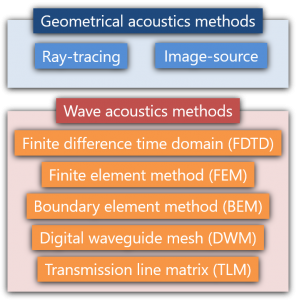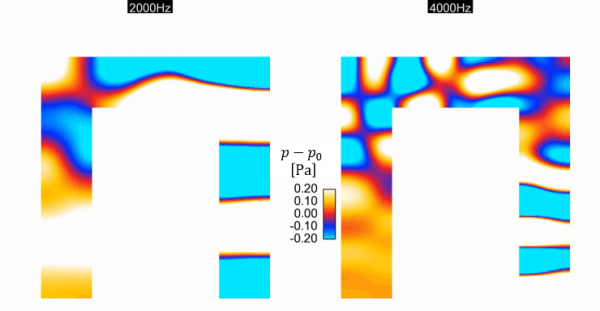The Finite Difference Time Domain (FDTD) method was originally developed by K. S. Yee in 1966 as a numerical technique to solve Maxwell’s equations in time domain. As the name implies, the FDTD method is based on the finite difference approximation to discretize partial differential equations.
The ideas of the FDTD method have been applied to other wave-field phenomena. For example, Madariga introduced the FDTD method in elastodynamics in 1976 and it is currently used in acoustic field analysis to solve sound wave propagation in time and space.

We’ll start a 10-part series of blog posts about applications of the FDTD in acoustic field analysis.
- Governing equations
- Boundary Conditions: Rigid body
- Boundary Conditions: Sound absorbing boundary
- Perfectly Matched Layer (PML)
- Sound source
- Scattering
- Diffraction
- Interference
- Resonance
- Refraction
